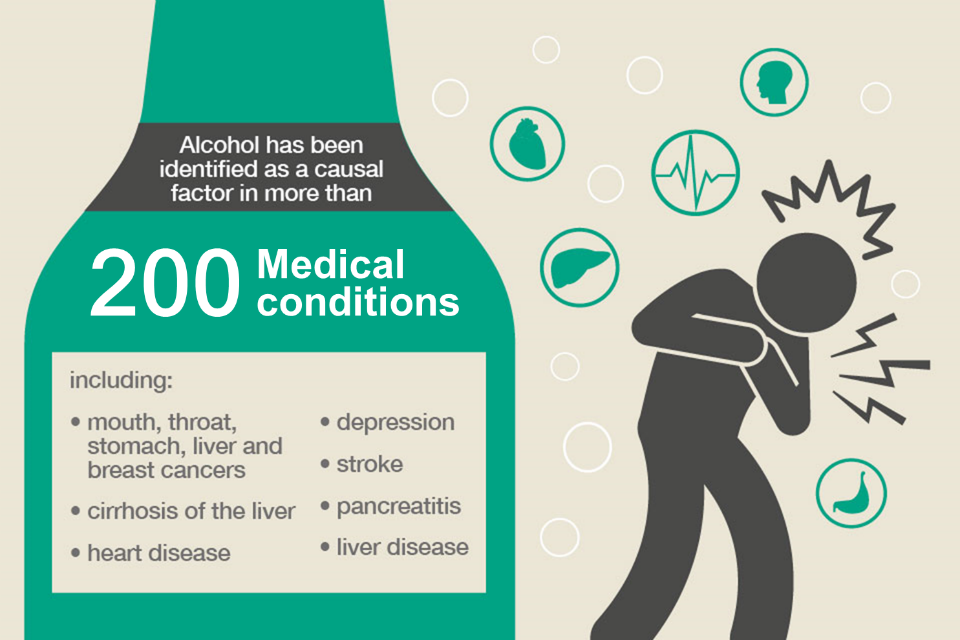Women And Alcohol: A Rise In Consumption And Associated Health Risks

Table of Contents
The Increasing Prevalence of Alcohol Consumption Among Women
Statistical Data and Trends
Statistics paint a concerning picture of rising alcohol consumption among women. Data from reputable sources like the CDC and WHO show a significant increase in alcohol-related hospitalizations and deaths in recent years. This trend isn't uniform; it varies across different demographics.
- Age Group: Data suggests a particularly sharp rise in alcohol consumption among women aged 30-49, although younger women are also showing concerning trends.
- Ethnicity: Disparities exist across ethnic groups, with some studies showing higher rates of alcohol-related problems in certain communities.
- Socioeconomic Status: Alcohol consumption patterns often correlate with socioeconomic factors, with some groups experiencing higher rates of problematic use.
- Geographic Location: Certain geographic regions show higher rates of alcohol-related issues in women, potentially influenced by cultural norms and access to resources.
Precise figures vary depending on the study and the metrics used (e.g., binge drinking, heavy drinking, alcohol dependence), but the overall trend is undeniable: more women are consuming alcohol, and often at levels that pose significant health risks.
Underlying Social and Cultural Factors
The increase in alcohol consumption among women isn't solely due to physiological factors. Significant social and cultural influences play a major role.
- Stress and Work-Life Balance: The pressures of modern life, including career demands, childcare responsibilities, and financial stress, can lead women to turn to alcohol as a coping mechanism.
- Social Expectations and Peer Pressure: Societal norms often normalize alcohol consumption, particularly in social settings. Women may feel pressured to drink to fit in or meet social expectations.
- Marketing and Media Influence: Targeted advertising and media portrayals often depict alcohol consumption as glamorous or desirable, contributing to its normalization and increased appeal.
- Trauma and Mental Health: Alcohol misuse can be linked to coping with trauma or pre-existing mental health conditions like anxiety and depression.
Unique Health Risks for Women
Physiological Differences and Impact
Women's bodies metabolize alcohol differently than men's, increasing their vulnerability to several health problems.
- Body Composition: Women generally have a higher percentage of body fat and lower percentage of water compared to men, resulting in a higher blood alcohol concentration (BAC) after consuming the same amount of alcohol.
- Hormonal Fluctuations: Hormonal changes throughout the menstrual cycle, pregnancy, and menopause affect alcohol metabolism and increase susceptibility to certain health problems.
- Liver Function: Women may experience more severe liver damage from alcohol consumption compared to men, even with similar levels of intake.
- Organ System Impacts: Alcohol affects various organs differently in women, potentially leading to specific health complications.
Increased Risk of Specific Diseases
Alcohol consumption significantly increases women's risk of developing several serious health conditions:
- Breast Cancer: Studies consistently link alcohol consumption to an increased risk of breast cancer, even at moderate levels.
- Heart Disease: Alcohol abuse contributes to heart disease risk factors such as high blood pressure and abnormal cholesterol levels.
- Liver Disease: Women are more susceptible to alcohol-related liver damage, including cirrhosis and liver failure.
- Mental Health Issues: Alcohol consumption exacerbates mental health problems like depression and anxiety, and can even trigger their onset.
- Reproductive Problems: Alcohol can lead to infertility, miscarriage, and birth defects.
- Alcohol Dependence: Women may develop alcohol dependence more quickly than men, and experience more severe consequences.
Seeking Help and Support
Recognizing the Signs of Alcohol Dependence
Recognizing the signs of alcohol abuse and addiction is crucial for early intervention. Women may exhibit various symptoms, including:
- Increased tolerance: Needing more alcohol to achieve the same effect.
- Withdrawal symptoms: Experiencing physical or psychological discomfort when trying to stop drinking.
- Loss of control: Difficulty stopping drinking once started.
- Neglecting responsibilities: Prioritizing drinking over work, family, or other commitments.
- Continued drinking despite negative consequences: Continuing to drink even when it causes problems in relationships, health, or finances.
Resources and Treatment Options
Help is available for women struggling with alcohol problems. Numerous resources and treatment options exist:
- Alcoholics Anonymous (AA): A peer-support group offering fellowship and guidance.
- SMART Recovery: A self-management and recovery program emphasizing cognitive behavioral techniques.
- Therapy and Counseling: Individual or group therapy can help address underlying issues contributing to alcohol abuse.
- Medication-Assisted Treatment (MAT): Medications can aid in reducing cravings and withdrawal symptoms.
- Rehabilitation Centers: Inpatient or outpatient rehabilitation programs provide comprehensive treatment.
For immediate help, contact the Substance Abuse and Mental Health Services Administration (SAMHSA) National Helpline at 1-800-662-HELP (4357). You can also find helpful resources online through organizations like the National Institute on Alcohol Abuse and Alcoholism (NIAAA).
Conclusion
The rising trend of alcohol consumption among women presents a significant public health concern. Understanding the unique physiological vulnerabilities and the societal factors contributing to this increase is crucial. The associated health risks, ranging from increased cancer risk to severe mental health issues, highlight the urgent need for preventative measures and readily available support systems for women struggling with alcohol. If you or someone you know is experiencing problems related to women and alcohol, please seek help immediately. Utilize the resources listed above to find support and begin your journey towards a healthier life. Don't hesitate to reach out – your well-being is paramount. Addressing issues related to women and alcohol abuse requires a multifaceted approach, combining education, prevention, and readily accessible treatment options.

Featured Posts
-
 Mls Season Opener Earthquakes Vs Real Salt Lake
May 16, 2025
Mls Season Opener Earthquakes Vs Real Salt Lake
May 16, 2025 -
 Paddy Pimblett Questions Poiriers Retirement The Callout Is Out
May 16, 2025
Paddy Pimblett Questions Poiriers Retirement The Callout Is Out
May 16, 2025 -
 Limited Time Celtics Finals Gear Under 20
May 16, 2025
Limited Time Celtics Finals Gear Under 20
May 16, 2025 -
 New Twins The Elon Musk And Amber Heard Embryo Dispute Intensifies
May 16, 2025
New Twins The Elon Musk And Amber Heard Embryo Dispute Intensifies
May 16, 2025 -
 Michael Venom Pages Prediction Pimbletts Path To Victory Against Chandler
May 16, 2025
Michael Venom Pages Prediction Pimbletts Path To Victory Against Chandler
May 16, 2025
